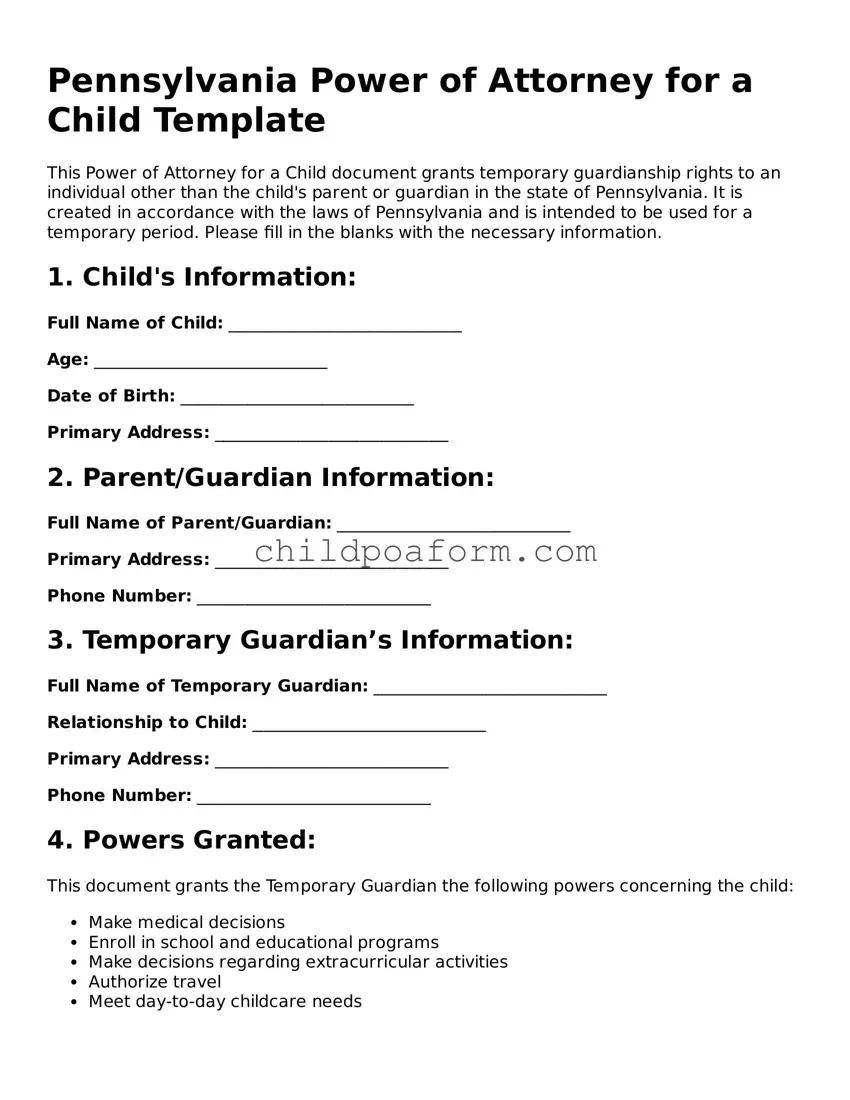Instructions on Utilizing Pennsylvania Power of Attorney for a Child
When circumstances arise that necessitate another individual to take on the responsibility of making decisions for a child, a Power of Attorney (POA) for a child becomes a critical document. This could be because of a parent's absence due to travel, illness, or other reasons that prevent them from fully being there for their child. The form allows a parent or guardian to grant temporary authority to another person, empowering them to make decisions regarding the child's care, education, and health needs. In Pennsylvania, completing a POA for a child requires attention to detail to ensure that the document accurately reflects the parent's or guardian's wishes and complies with state guidelines.
Steps to Fill Out the Pennsylvania Power of Attorney for a Child Form:
- Identify the form - Obtain the most current version of the Pennsylvania Power of Attorney for a Child form. This can typically be found on state government or legal aid websites.
- Enter the date - At the top of the form, enter the current date to indicate when the power of attorney is being established.
- Fill in the names - Provide the full legal names of the child, the parent(s), or guardian(s) granting the power, and the person (agent) to whom the power is being granted.
- Detail the powers granted - Clearly indicate the specific powers being transferred. This may include decisions related to the child’s education, health care, and general welfare.
- Add limitations (if any) - If there are specific powers or decision-making areas that the parent or guardian does not want to include, these should be clearly listed and defined on the form.
- Specify the duration - State the period during which the power of attorney will be in effect. This can be a set of dates, a duration (such as six months), or it can be tied to the occurrence of a specific event.
- Signatures - The document must be signed by the parent(s) or guardian(s) in the presence of a notary public. Some states may also require the signature of the agent accepting the responsibilities.
- Notarization - The form must be notarized to certify the identity of the signatories and the voluntary nature of the agreement.
- Distribute copies - Provide a signed copy to the agent, keep one for personal records, and consider giving copies to relevant entities, such as the child’s school or healthcare provider.
Responsibly choosing an agent and clearly defining their powers and limitations are crucial steps in creating a Power of Attorney for a child. Once completed, this document plays a pivotal role in ensuring a child’s needs can be met during times when the parent or guardian cannot be present to make those decisions themselves. It’s advised to review the POA periodically and update it as needed to reflect any changes in the child's care requirements or the parent's wishes.
